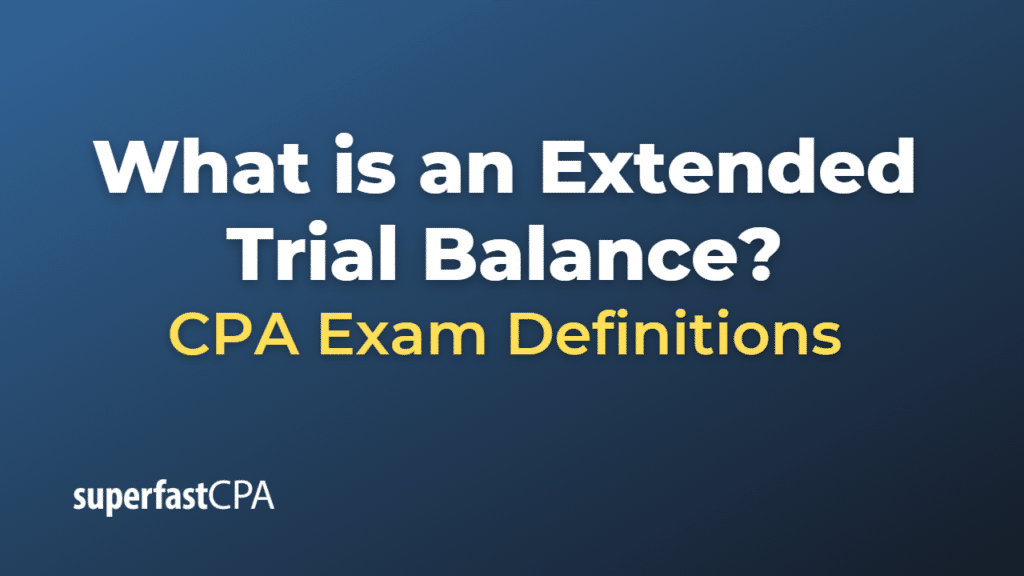Extended Trial Balance
An extended trial balance (also known as a worksheet) is a multi-column worksheet that is used for making adjustments to the accounts at the end of an accounting period. It’s designed to serve as a tool to help in the preparation of financial statements such as the balance sheet and income statement.
The extended trial balance works in the same way as the trial balance in that it extracts all accounts from the ledgers and their balances. However, it goes a step further by not only having columns for the debit and credit balances but also columns for adjustments such as accruals, prepayments, depreciation, and so on. It then extends to have columns showing the updated or adjusted balances.
The structure of an extended trial balance might look something like this:
- Account names
- Unadjusted trial balance (debit and credit columns)
- Adjustments (debit and credit columns)
- Adjusted trial balance (debit and credit columns)
- Income statement (debit and credit columns)
- Balance sheet (debit and credit columns)
The extended trial balance helps ensure that all adjustments are made correctly and that the financial statements prepared are accurate. It’s especially useful as a working document and helps to reduce the chances of errors in the final financial statements.
Example of an Extended Trial Balance
Let’s walk through an example of an extended trial balance. Suppose a business has the following unadjusted trial balance at the end of its financial year:
| Account Name | Debit ($) | Credit ($) |
|---|---|---|
| Cash | 10,000 | |
| Accounts Receivable | 5,000 | |
| Supplies | 2,000 | |
| Equipment | 15,000 | |
| Accounts Payable | 3,000 | |
| Loan | 10,000 | |
| Capital | 15,000 | |
| Sales Revenue | 25,000 | |
| Wage Expense | 7,000 |
| Rent Expense | 2,000 | |
|---|---|---|
| Total | 41,000 | 41,000 |
Let’s say there are year-end adjustments needed:
- $500 of supplies were used up.
- $1,000 of accrued wage expenses are yet to be paid.
- $2,000 of sales revenue was invoiced but not yet received.
These adjustments would look like this in the extended trial balance:
| Account Name | Unadjusted Debit ($) | Unadjusted Credit ($) | Adjustments Debit ($) | Adjustments Credit ($) | Adjusted Debit ($) | Adjusted Credit ($) |
|---|---|---|---|---|---|---|
| Cash | 10,000 | 10,000 | ||||
| Accounts Receivable | 5,000 | 2,000 | 7,000 | |||
| Supplies | 2,000 | 500 | 1,500 | |||
| Equipment | 15,000 | 15,000 | ||||
| Accounts Payable | 3,000 | 1,000 | 4,000 | |||
| Loan | 10,000 | 10,000 | ||||
| Capital | 15,000 | 15,000 | ||||
| Sales Revenue | 25,000 | 2,000 | 23,000 | |||
| Wage Expense | 7,000 | 1,000 | 8,000 | |||
| Rent Expense | 2,000 | 2,000 |
| Supplies Expense | 500 | 500 | ||||
|---|---|---|---|---|---|---|
| Total | 41,000 | 41,000 | 2,000 | 2,000 | 43,000 | 43,000 |
So you can see that the adjusted trial balance matches up once adjustments are made. This adjusted trial balance can then be used to create the financial statements.













